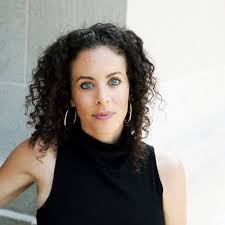by Robert H. Lustig, MD Author of New York Times Bestseller, FAT CHANCE
VIDEO: San Francisco Library Robert H. Lustig (99 Min)
AUDIO: Interview with author Robert H. Lustig (65 Min)
Page 17-18: Once upon a time we were happy. Then the snake showed up and we’ve been miserable ever since. Hieronymus Bosch’s painting Garden of Earthly Delights (circa 1500) is a triptych housed in the Prado in Madrid. It is an allegorical warning of what happens when we squander our birthright of happiness divined from God in one garden and move on to the pleasures of the flesh in the next garden, with the inevitable result of eternal damnation. Figures. Our most lauded goal in life - to be happy - is seemingly an illusion, out of reach for us common folk. Except the rich aren’t any happier. Happiness seems to be a mirage, something to chase after, to keep us turning over rocks, kissing frogs, and trying to fit keys into the magic lock.
But along the way, wandering through our own individual gardens of earthly delights in search of our seemingly unobtainable nirvanas, we’ve sure had a whole lot of fun. Or we’ve at least tried to. We buy shiny things, play Powerball, imbibe with friends or sometimes alone. So why are so many of us miserable? Are we destined just to sink further into the abyss of pleasure with no hope of extricating ourselves to find real happiness? Is it all futile? Lots of people have died trying to get to that magic place of contentment and inner peace, that thing called “happiness”. But if we can’t get there, what’s the point?
What if I told you that happiness is right there in front of you, just behind the curtain of your own brain?
To some, an argument over the difference between pleasure and happiness might seem like a straw man, a false argument not really worth having. Hey, they both feel good; why should you care? And pleasure is here, now. Happiness…maybe not so much, and not so soon.
But it does matter. And not just to you but to all of society. Explaining the differences between these two otherwise positive emotions forms the narrative arc of this book.
Page 24
For the rest of this book, pleasure, derived from the French plaisir for “to please”, is defined as the concept of gratification or reward. The keys to this definition are:
- it is immediate
- it provides some level of excitement or amusement, and
- it is dependent on circumstance.
Conversely, happiness is defined as the Aristotelian concept of eudemonia - that is, “contentment” or well-being or human flourishing, or, as the introductory quote from Yeats, “growth” - physical and/or spiritual. The keys to this definition are:
- It’s about life, not the afterlife,
- it’s not prone to acute changes in one’s life, and
- it is unrelated to circumstance, so anyone can be happy, not just the rich and powerful.
SOURCE
http://www.robertlustig.com/hacking/ videos

